Want to show up more often in users’ Instagram feeds? Wondering what type of Instagram content exposes you to new audiences and which is shown to your followers?
In this article, you'll learn how the Instagram algorithm works in 2023 so you can improve your content strategy.
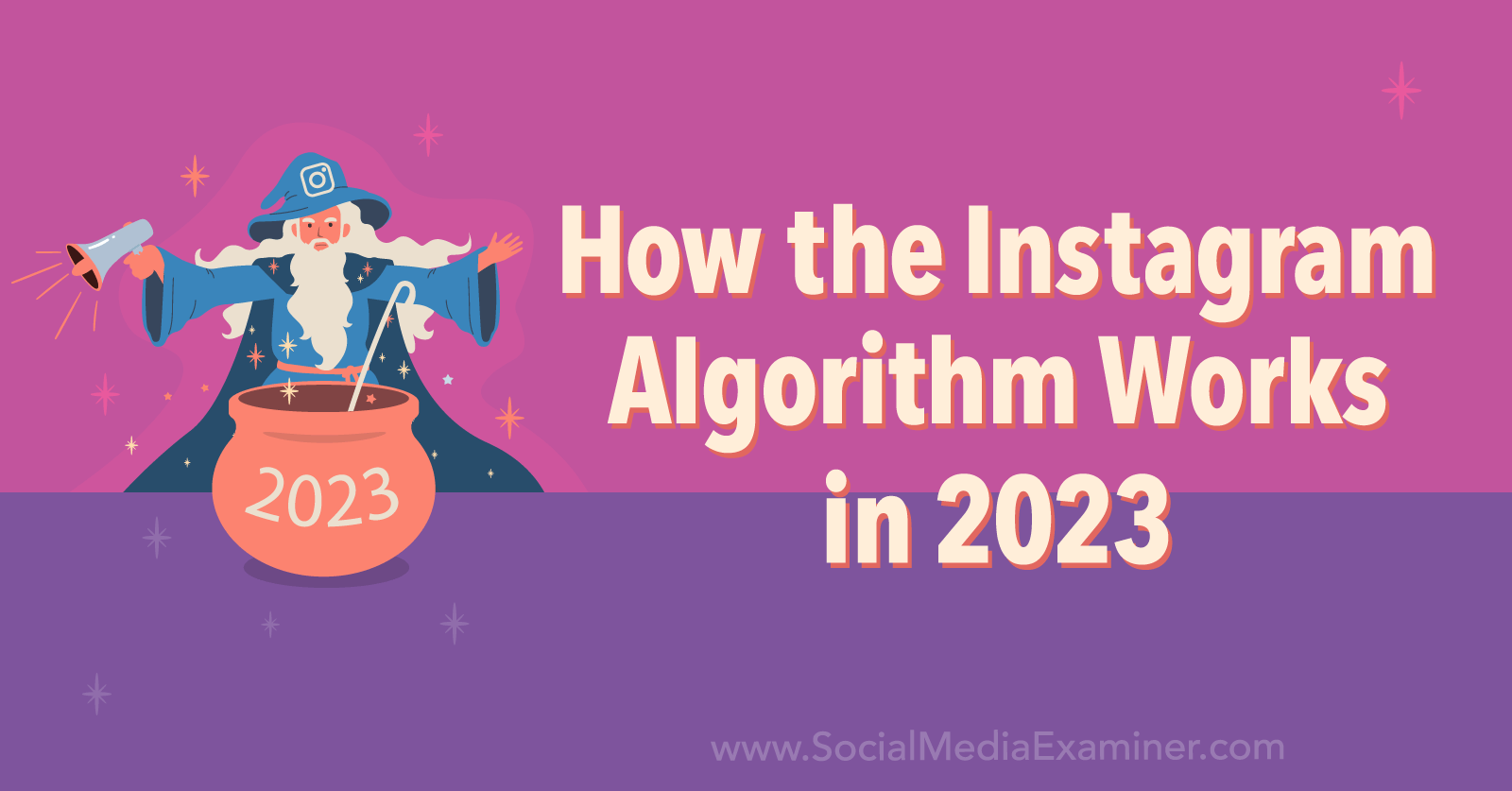
Why Marketers Need to Know How the Instagram Algorithm Works
For social media marketers, it's tempting to ignore what you think the Instagram algorithm will favor and simply focus on publishing great content. However, these concepts aren't mutually exclusive. Does your definition of “great content” include posts, reels, and stories that attract followers, get engagement, and result in paying customers? In most cases, that means creating content that aligns with the Instagram algorithm.
After all, the algorithm relies on ranking signals like how popular your content is and how often other accounts interact with yours. Content that the algorithm favors is likely to appear at the top of more people's feeds and even land on the Explore tab. That means using these signals as a guide can help you create more opportunities to get in front of your target audience and reach your goals.
So what are the most important ranking signals for the Instagram algorithm? Until recently, social media marketers had to rely on an official explanation published in June 2021. As helpful as this explanation initially was, it has become outdated over the years, especially after Instagram's many major feed updates.
In May 2023, Head of Instagram Adam Mosseri posted a reel explaining how the platform's algorithm works now. Most importantly, you should know that Instagram doesn't have a single, unified algorithm. Each surface (i.e., Explore or Reels) uses a unique set of ranking signals. That means you need to know how each surface works so you can optimize effectively. We'll review each one separately below.
Keep in mind that the platform's ultimate goal is to generate a personalized feed with content that the user finds interesting. You can't expect to land at the top of everyone's feed every time but you can learn what works best most of the time and adjust your strategy accordingly. Below, we'll cover tips for leveraging these insights to create better content.
How does the Instagram algorithm work?
How Instagram Ranks Stories
When ranking stories, Instagram prioritizes the content that's most likely to make users tap to view, send a reply, or react with an emoji. In other words, your engagement habits on Instagram play a big role in determining the types of stories you see. To make informed guesses about what you'll engage with, the platform looks at signals like:
- How often you've viewed the account's stories in the past
- Your history of engaging with the account's stories
- Your patterns of interacting with the account's other content, including feed and reels
- How close you appear to be with the account based on DMs and other touchpoints
Keep in mind that the goal of stories is to reinforce connections with people and brands that you already have a relationship with. That's why in the Stories tray, you only see content from accounts you're already following and popularity has a negligible role in ranking this type of content.
How can brands rank for stories? Use your Instagram insights to find stories that generated the highest reach and engagement. Pinpoint what made them perform so well. For example, maybe you used interactive stickers to get more engagement or shared exclusive content to create deeper connections with your most loyal followers.
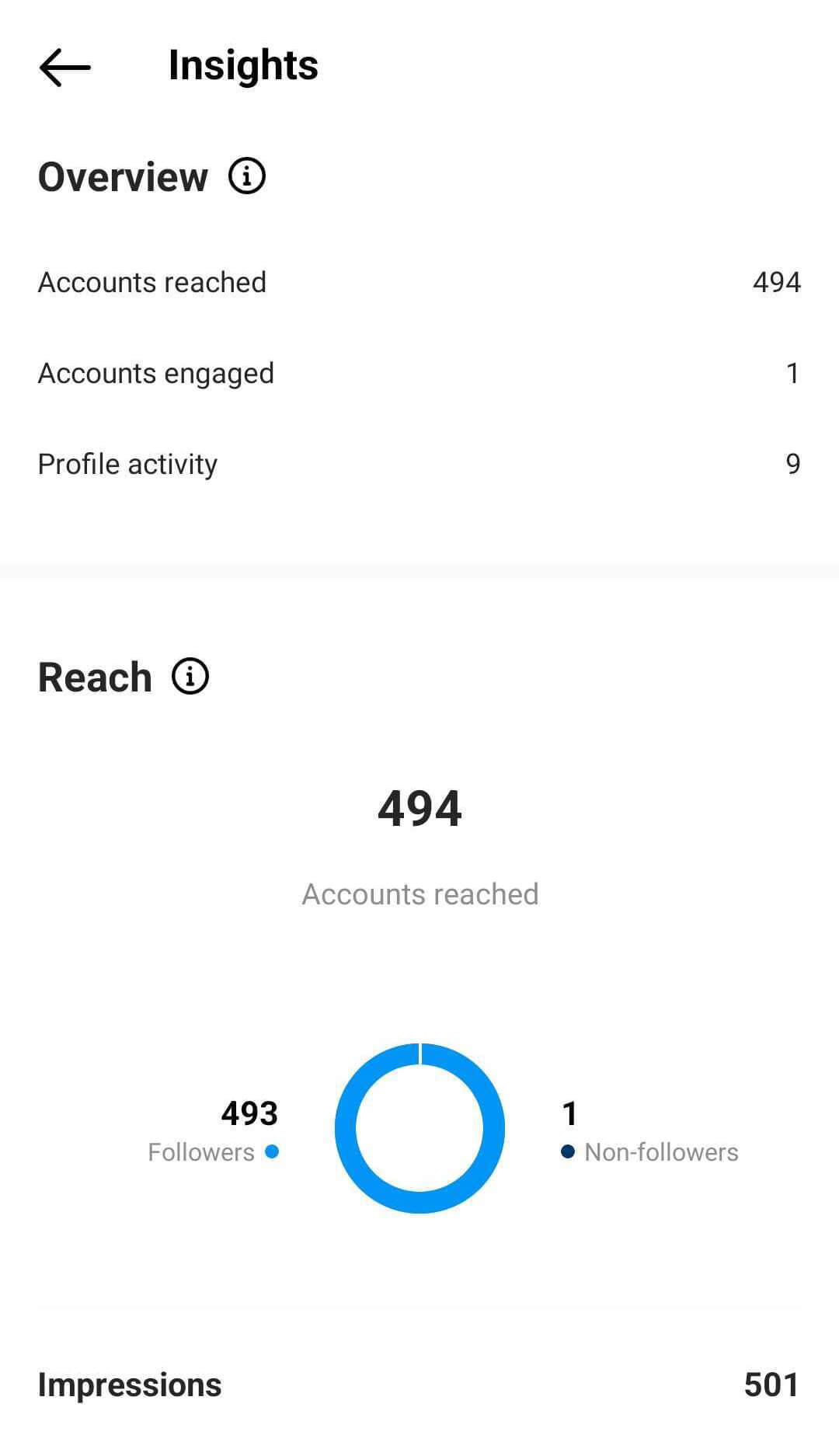
How Instagram Ranks Feed Content
Unlike Stories, the Instagram feed includes content from accounts you follow and new-to-you accounts the platform thinks you'll like. As Mosseri explains, the feed aims to get you caught up on the best content published since you last opened the app, from both accounts you already follow and those you haven't seen before.
When ranking feed content, Instagram considers your past activity in the app to assess how likely you are to comment on, like, or share a post. The platform also factors in how likely you are to tap to view an account's profile or spend more than a split second viewing a post.
Because the feed includes content from accounts you don't yet follow, the feed algorithm looks at both popularity and relationship ranking signals including:
Get World-Class Marketing Training — All Year Long!
Are you facing doubt, uncertainty, or overwhelm? The Social Media Marketing Society can help.
Each month, you’ll receive training from trusted marketing experts, covering everything from AI to organic social marketing. When you join, you’ll also get immediate access to:
- A library of 100+ marketing trainings
- A community of like-minded marketers
- Monthly online community meetups
- Relevant news and trends updates
- Your past feed activity, including the content formats and topics you tend to like
- Information about the post, including how popular it is and how other accounts have engaged with it
- Information about a given account, including how often they've posted recently and how others have engaged
- Your past interactions with the author including DMs and engagement with their posts, reels, or stories
In the feed, users do have some control over the accounts that are most likely to appear at the very top. By adding the accounts you like best to your favorites list, you can dramatically increase the chance that they'll appear at the very top of your Instagram feed. Plus you can always opt to view your favorites feed exclusively, giving you an easy way to find great content quickly.
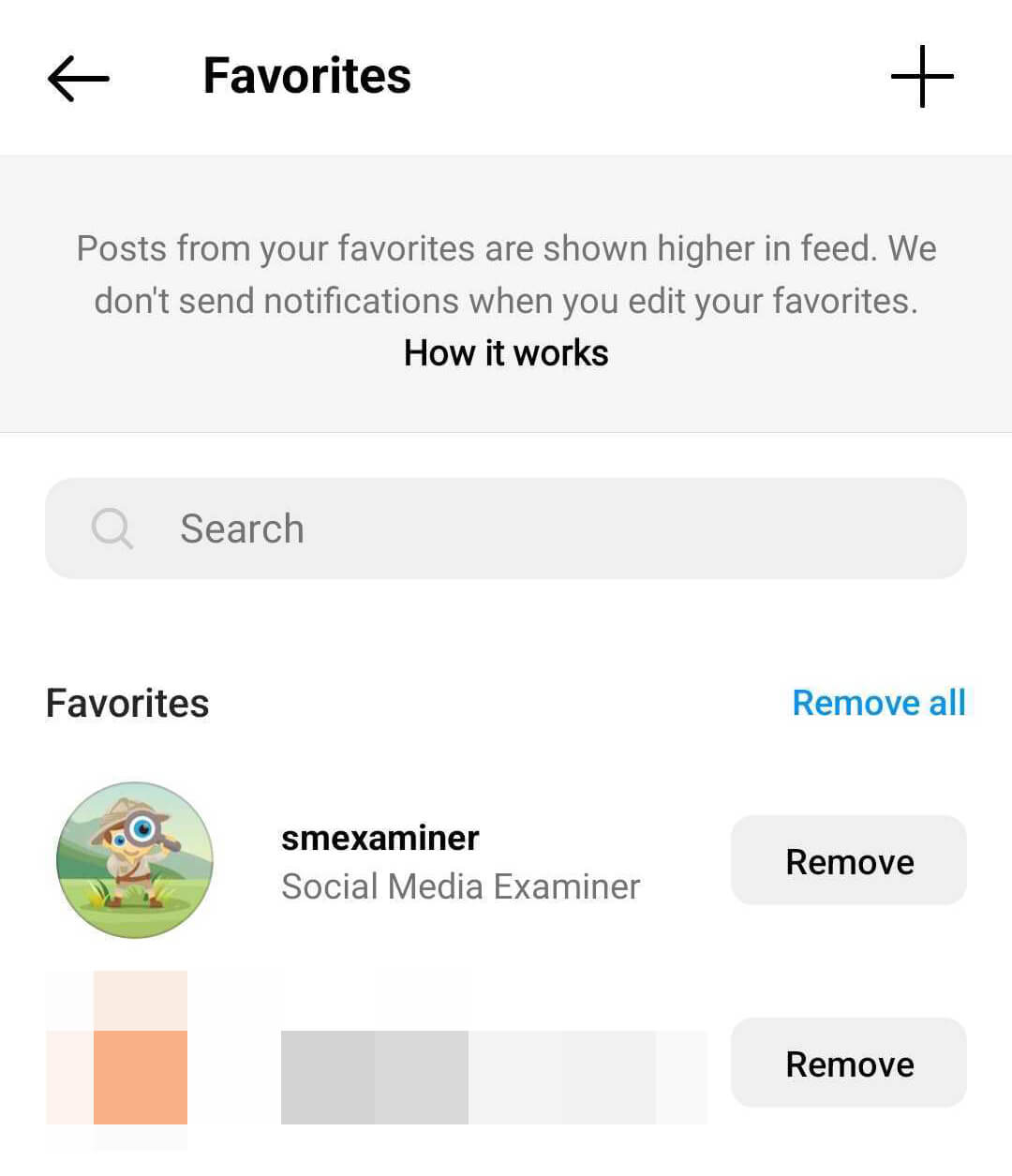
How can brands rank for the feed? One option is to encourage followers to add your account to their favorites list. It's also helpful to review your post insights and pick out top performers. For example, if all of your best posts are on a similar subject, you may have found a topic with a lot of growth potential.
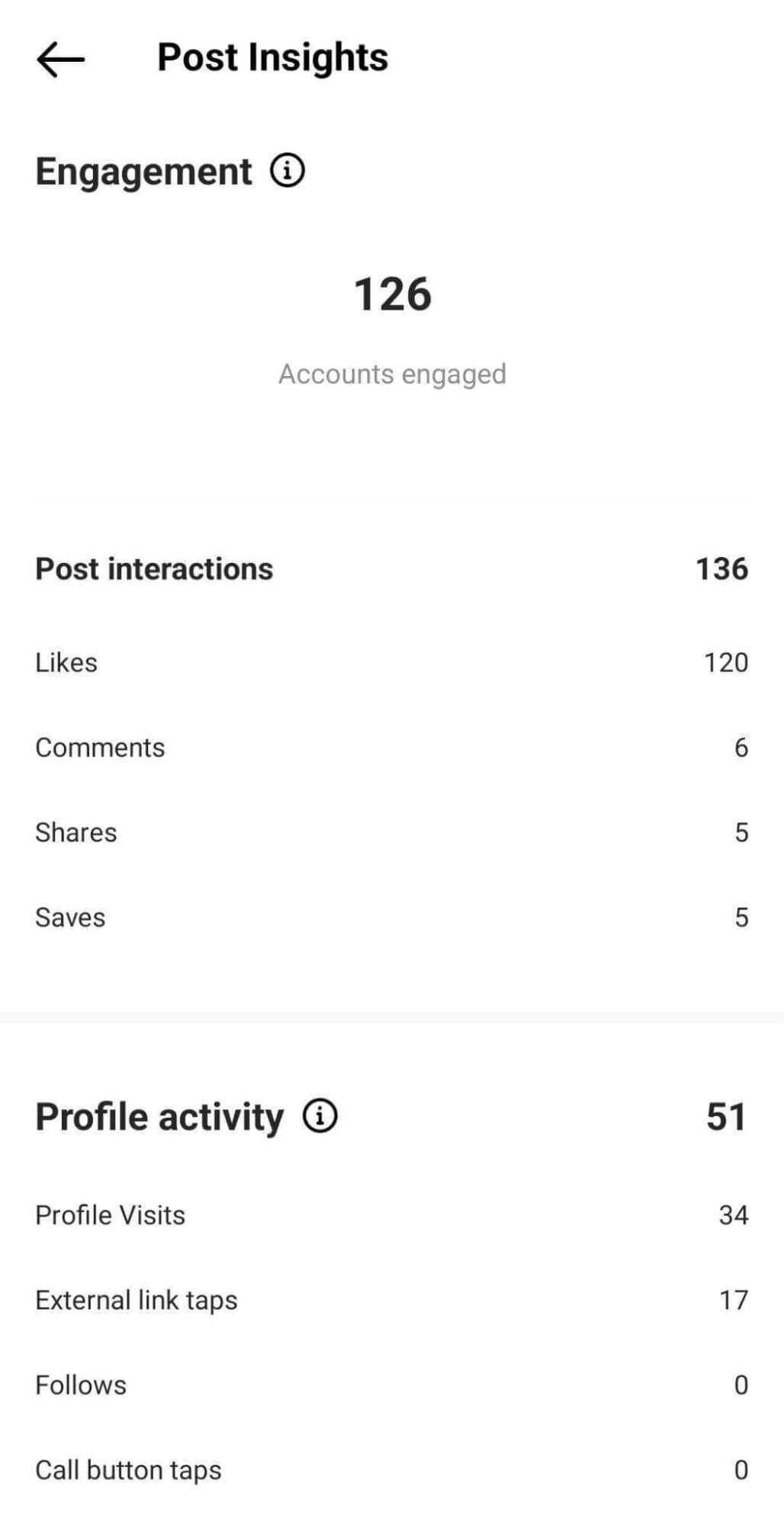
How Instagram Ranks Reels
While the feed includes a mix of content from accounts you follow and those you don't, the reels feed focuses on new-to-you accounts that Instagram thinks you'll enjoy. As Mosseri explains, “the goal of reels is to entertain you,” which typically means delivering popular content.
When ranking reels, Instagram considers how you'll probably interact with the content based on your past activity. The platform factors in the type of reels you generally interact with and the short-form videos that other people who engage with that content appear to enjoy.
The platform also calculates how likely you are to watch a reel all the way through, which means the algorithm considers your typical watch time. In addition, Instagram looks at how likely you are to visit a reel's audio page and start creating your own short-form video content.
Because the Reels feed is so heavily skewed toward accounts you don't follow, it's no surprise that ranking signals like past interactions with the account sit below signals like your activity. Ranking signals for reels include:
- Topics and formats you've shown interest in on Instagram based on your viewing and engagement history
- Your relationship with the account including your history of interacting in the Reels feed or with other content
- Reel-level data including how popular it is, how recent it is, and which audio tracks it includes
- Details related to the account including their average engagement and number of followers
How can brands rank for the Reels tab? Check your reels insights to see which drove the most plays. Focus on reels that reached the most non-followers, especially if you want to grow your following. Pay attention to watch time, as you ideally want to create reels that users watch to the end.
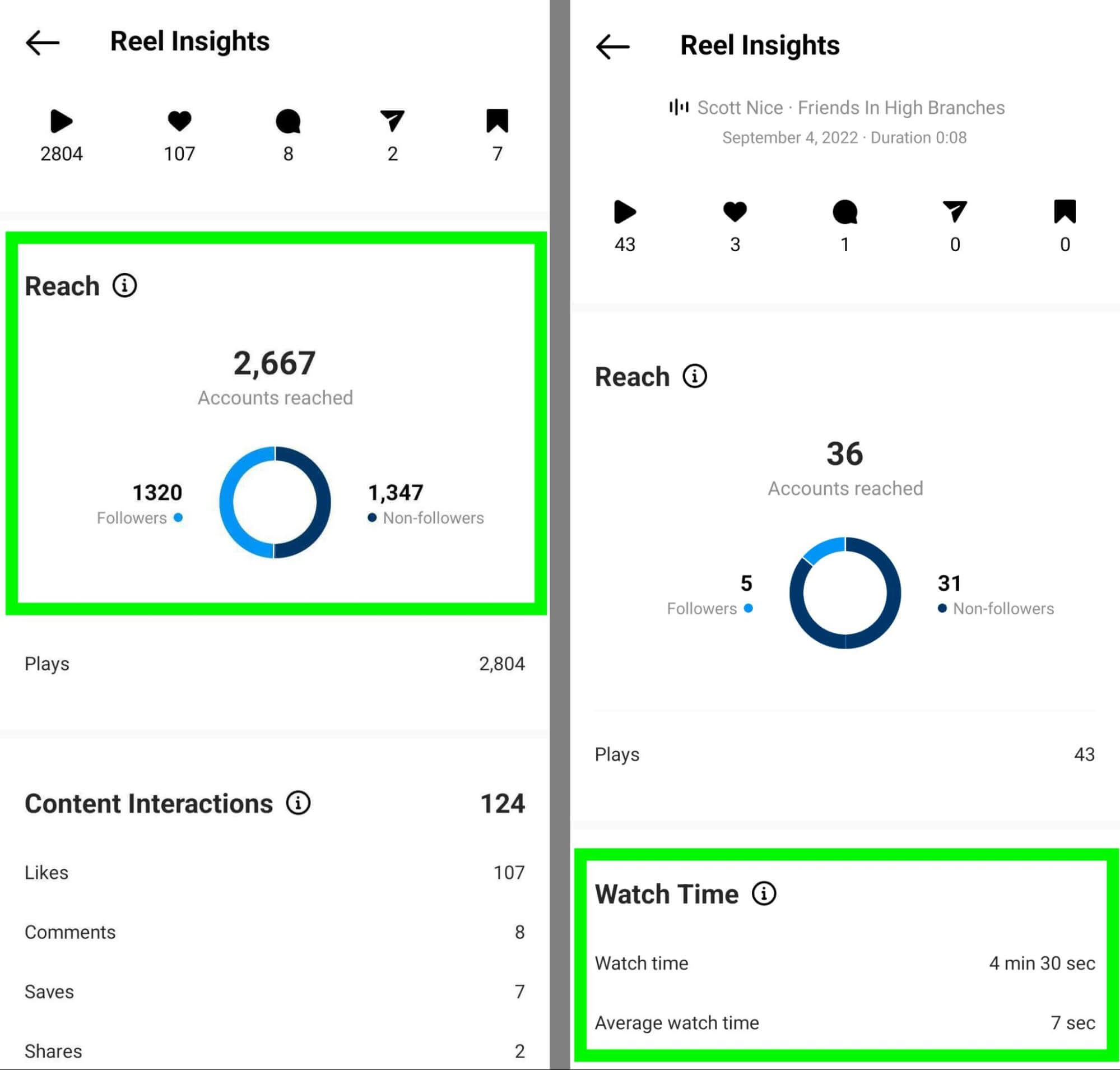
How Instagram Ranks Explore
The feed and the Reels tab both include varying levels of suggested content that you're likely to appreciate, even though you don't follow the accounts (yet). However, Explore takes suggested content to the next level, displaying content almost exclusively from accounts you don't follow.

Discover Proven Marketing Strategies and Tips
Want to go even deeper with your marketing? Check out the Social Media Marketing Podcast! Publishing weekly since 2012, the Social Media Marketing Podcast helps you navigate the constantly changing marketing jungle, with expert interviews from marketing pros.
But don’t let the name fool you. This show is about a lot more than just social media marketing. With over 600 episodes and millions of downloads each year, this show has been a trusted source for marketers for well over a decade.
Whether you call it a discovery engine or a “recommendation surface” as Mosseri does, Explore is designed to show you new content and accounts that you're likely to engage with. When ranking Explore posts and reels, the algorithm considers how likely you are to like, save, or share a post based on your past activity.
Because it's engineered for discovery, Explore uses ranking signals like popularity and topics to deliver content. Top ranking signals include:
- Post-level data including how much engagement it's already received and how quickly it's getting engagement (Although this is also a ranking factor for other surfaces, it's significantly more important for Explore.)
- Your previous activity in Explore including the topics and formats you tend to engage with
- Your previous interactions with the account—although in most cases, Explore features new-to-you accounts
- Account-level data including the engagement levels on recent content
How can brands rank for Explore? Find your top-performing content and check the insights to see how users found it. Look for From Explore in the list of impression sources. Once you identify content that's attracted a lot of impressions from Explore, you can reverse-engineer it to increase your chances of ranking for Explore.
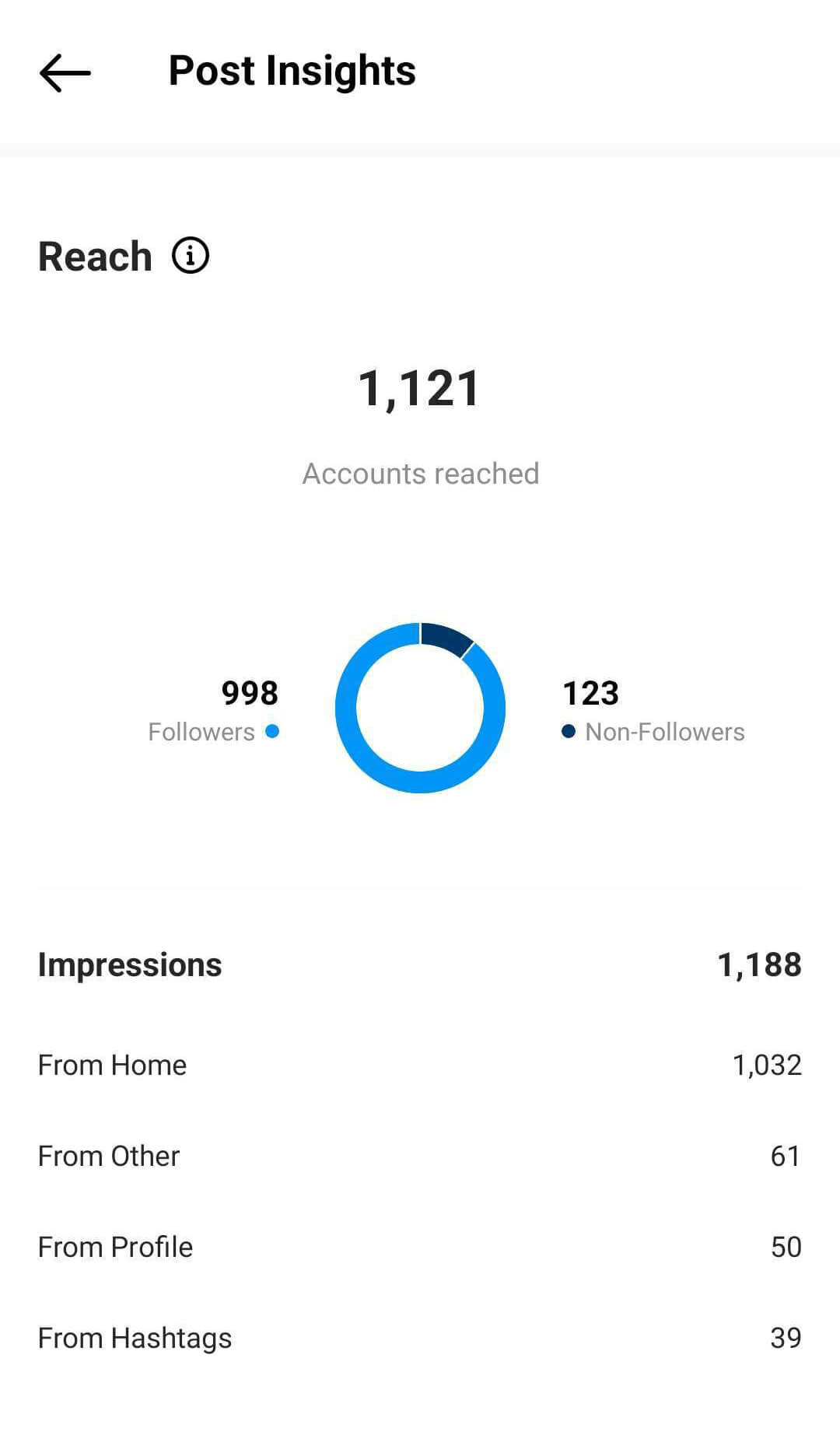
4 Tips to Use the Instagram Algorithm to Your Advantage
Now that you know how the Instagram algorithm works, you can make the ranking signals work in your favor. Use the tips below to grow your Instagram account.
#1: Experiment With Content Formats and Topics
It's important not to view the Instagram algorithm as a one-time code to crack. If you use that approach, your content is likely to become formulaic. Over time, it will become less interesting to your audience, gradually leading to lower engagement. Since the platform's surfaces use engagement as a strong ranking signal, any content formulas will naturally become less effective.
To ensure that your content continues to engage your followers and reach new audiences, make experimentation a priority. Test new formats and leverage Instagram's in-app creative tools. Try new topics to see how your audience responds or test new angles for material your followers already love.
For example, @happyice regularly experiments with new ways to showcase the brand's frozen treats and engage users. The brand's feed features a range of colorful desserts, behind-the-scenes snapshots of the team, and collaborations with local businesses.
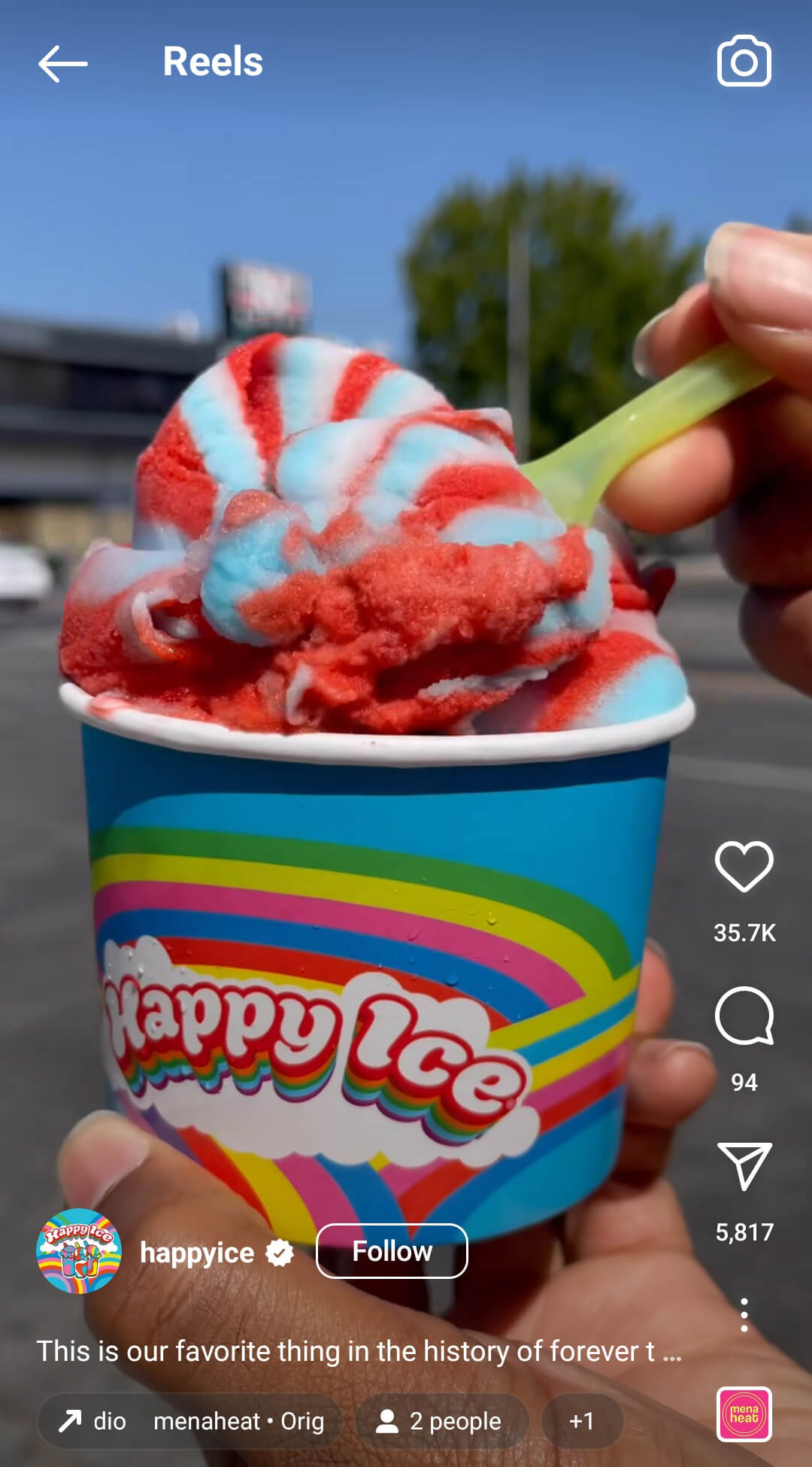
It's easy to see why the @happyice reel below appeared on my Explore tab. The short-form video has already generated more than 600,000 plays, tallied more than 35,000 likes, and led to nearly 6,000 shares. It also uses a trending audio track to make the reel even easier for new followers to discover.
Experimentation has paid off for the brand, as the account's reels regularly get more than 100,000 plays, along with impressive engagement rates. In addition to using trending audio, the brand regularly creates original tracks featuring voiceovers by team members.
#2: Collaborate With Creators and Brands
If you create content that Instagram regularly recommends in the Reels feed and ranks on the Explore tab, you can expand your reach and grow your following over time. Yet ranking for Explore is far from easy. For smaller accounts, it can be incredibly difficult to achieve the virality you need to reliably rank for this surface.
Another proven way to get your Instagram content in front of more people is to collaborate with creators and other brands. With collaborations, you can naturally introduce your brand to new audiences without paying for ads. Choose collaborators whose audiences share several qualities with yours so your brand and content will be more likely to appeal to them.
For example, @misfitsmarket regularly collaborates with creators like @emeraldcchan and @bobbyflay. The reel below features a collab with @emeraldcchan and highlights how the chef cooks with the brand's produce. Since both audiences likely have an interest in cooking, high-quality ingredients, and original recipes, it's easy to see why this collaboration works so well.
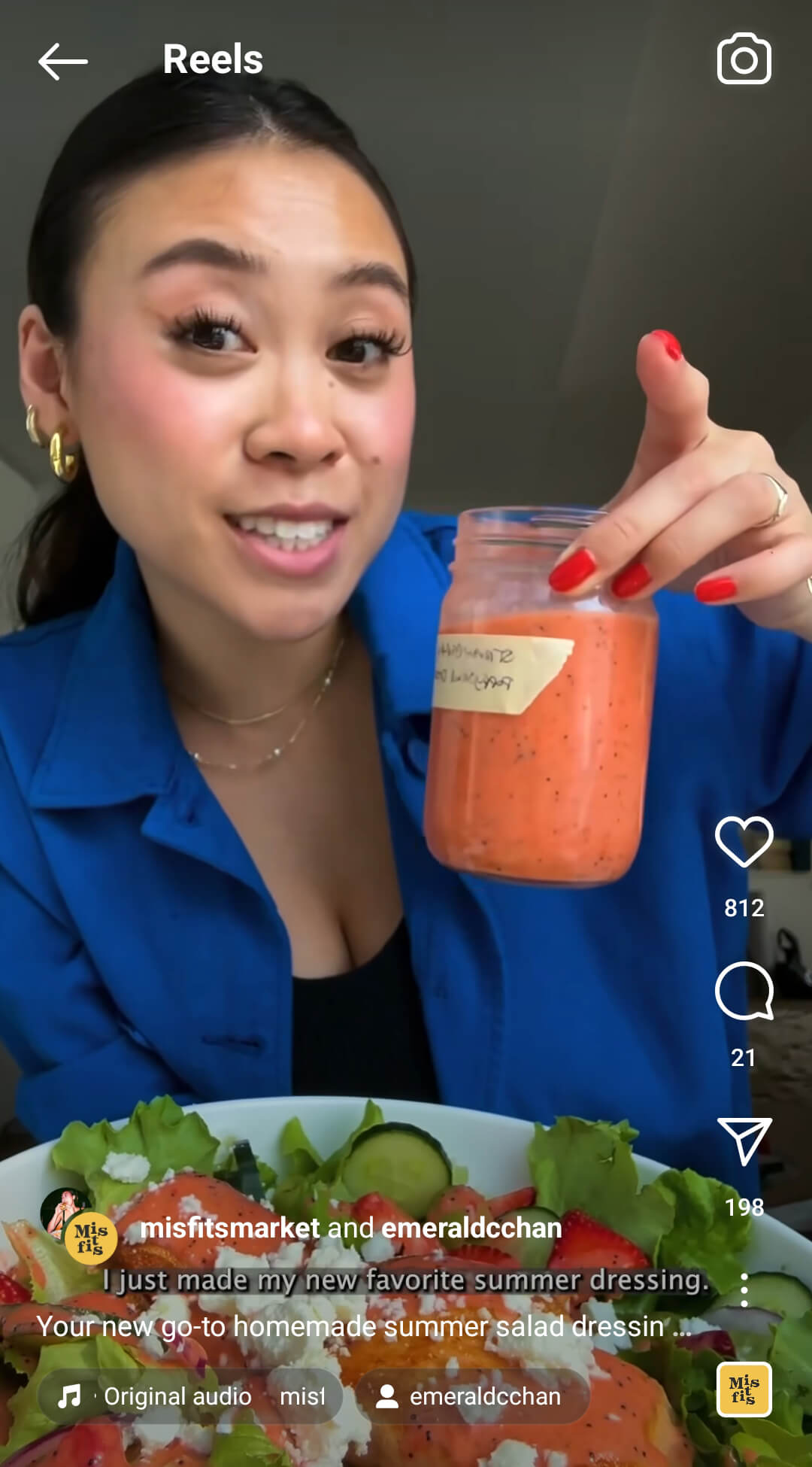
When you publish collaborative content on Instagram, you can certainly tag the other account in the content itself or mention the account in the caption. But by using Instagram's built-in Collab feature, you can achieve higher reach naturally. The Collab feature allows the content to display in both accounts' feeds, where it can reach both accounts' audiences organically.
#3: Create Original Content
If your team is trying to grow an Instagram account with limited resources or a small budget, you may have to repurpose older content or use stock content. Although there's nothing wrong with either of these approaches, it's important to publish original content to Instagram.
Mosseri has acknowledged that identifying original content isn't always easy, and the way the platform does so will evolve over time. However, you can take a couple of steps to ensure that anything you post includes original visuals or audio. With native tools like templates and remixes, you can build off of existing elements while still creating original content.
For example, I was able to create both a remix and a template using the @happyice reel below. Since Instagram allows original content to appear either before or alongside remixed content, this tool lets you respond to popular content while adding your own take. With templates, you can use a reel as inspiration for your own content, copying the original timing but replacing the clips with your own.
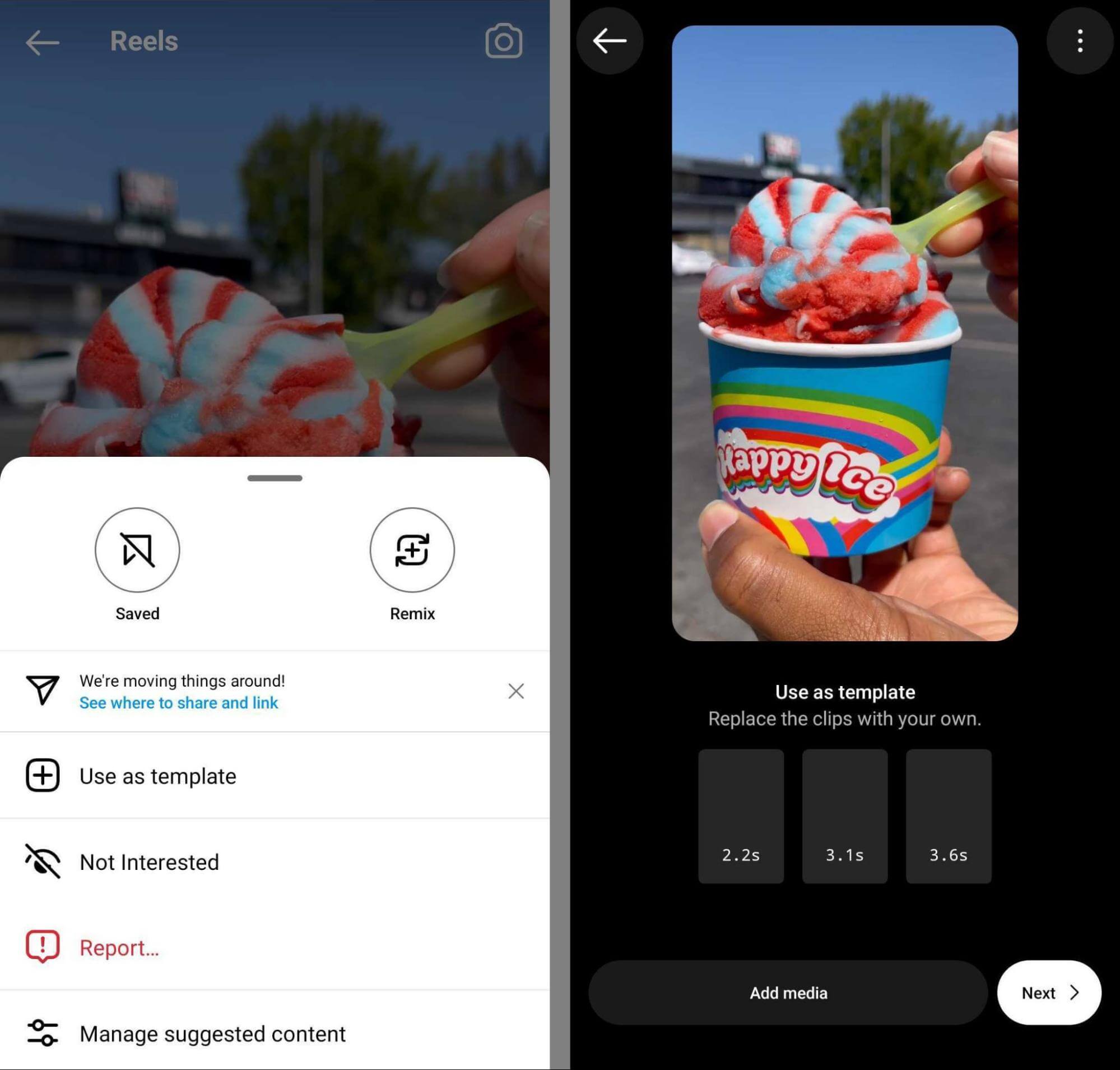
#4: Review Your Account Status
The tips above can help you maintain strong engagement and gradually expand your reach over time. But if you notice a sudden decrease in reach or engagement, you might be dealing with a more serious issue. If you post content that goes against Instagram's Community Guidelines, the platform may restrict your account and prevent your content from reaching a wider audience.
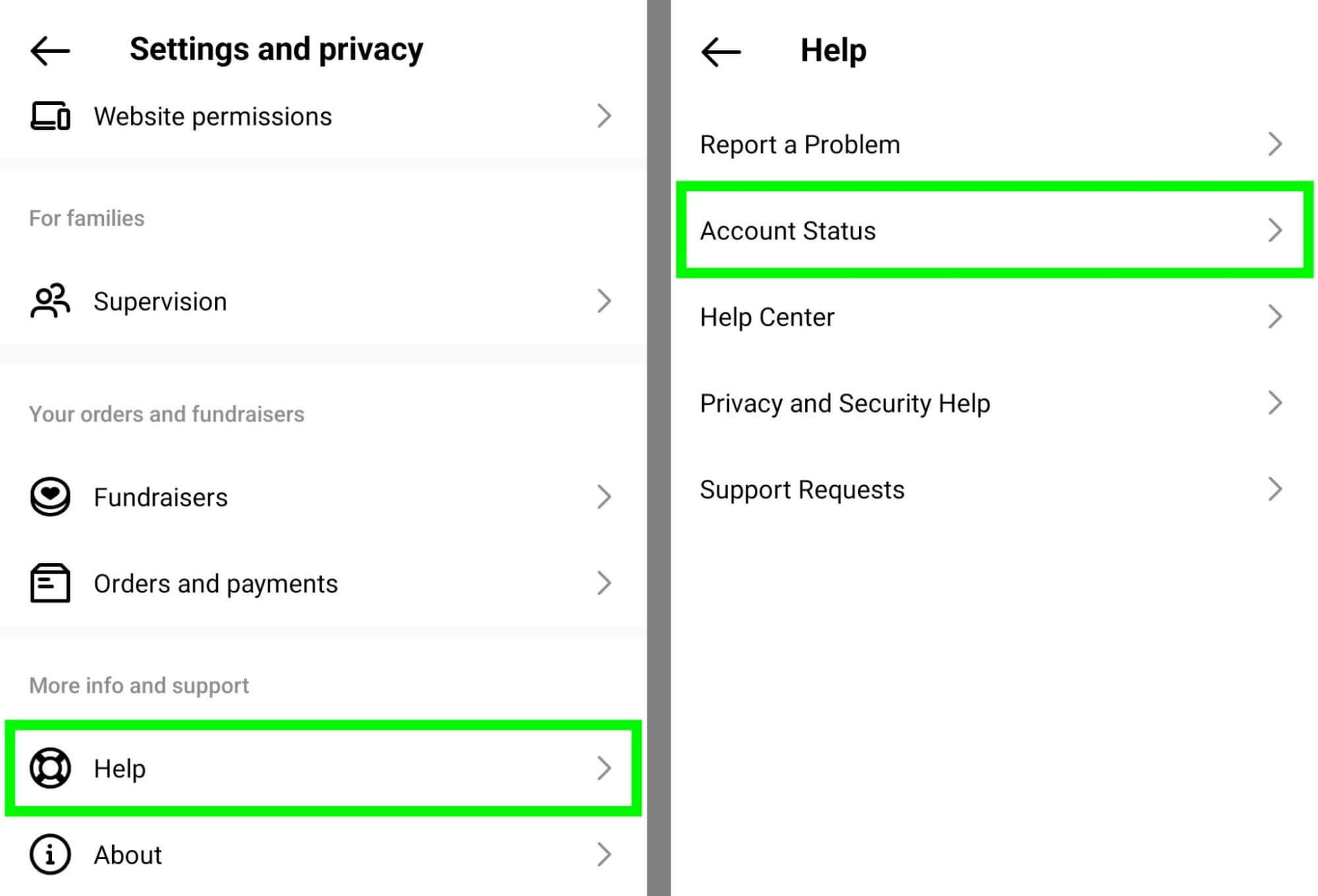
To check if your account has any restrictions, open your account menu and go to Settings and Privacy. Tap Help and go to Account Status. If your account status looks like one of the examples below, you don't have any restrictions. If you've posted content that goes against community guidelines, however, you'll be able to review it from this screen.
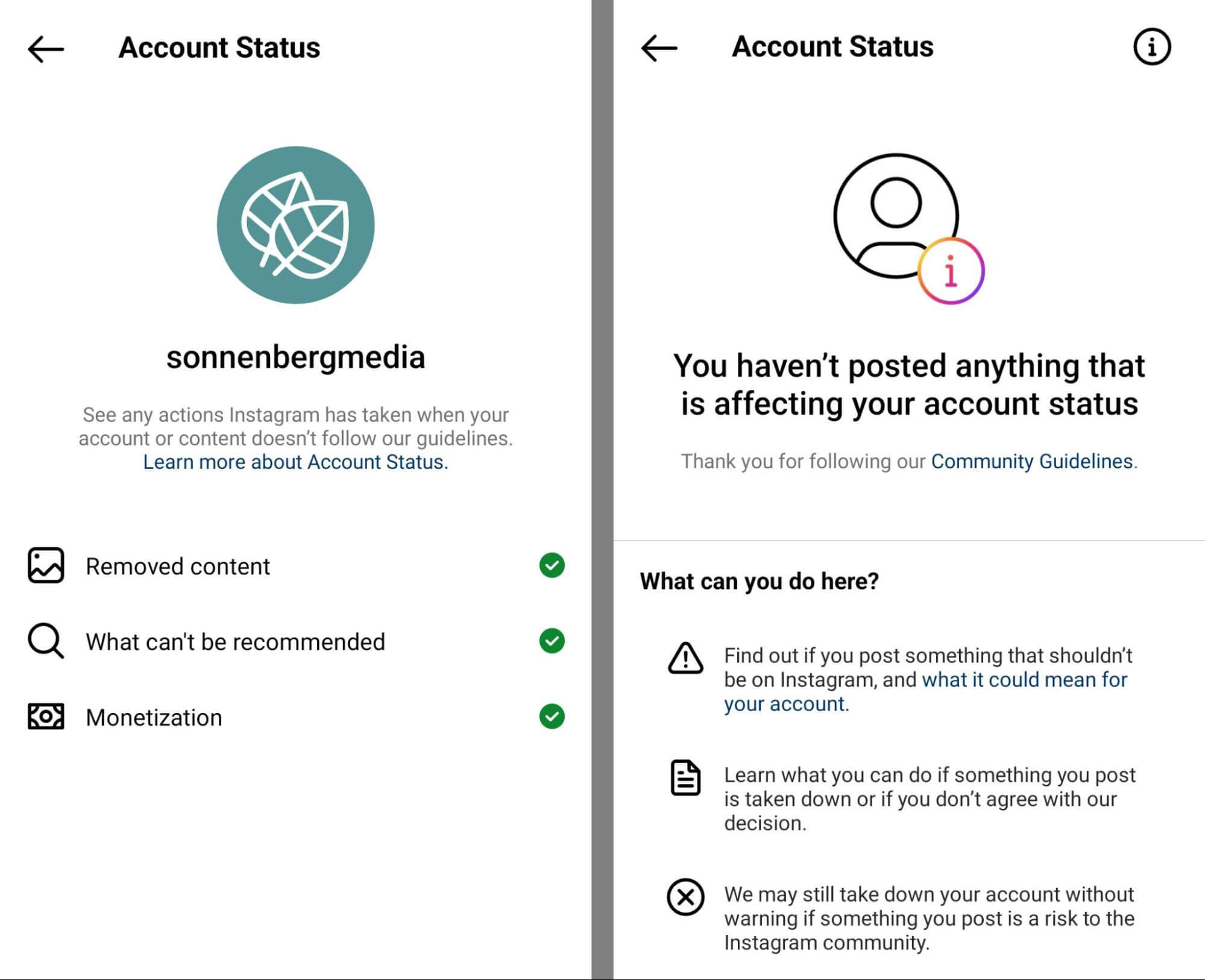
Conclusion
When you want to grow your account and leverage Instagram more effectively, it's essential to understand and optimize for the algorithm. Using the guidelines above, you can see how the algorithm works in 2023 and create content that activates the right ranking signals.
Stay Up-to-Date: Get New Marketing Articles Delivered to You!
Don't miss out on upcoming social media marketing insights and strategies! Sign up to receive notifications when we publish new articles on Social Media Examiner. Our expertly crafted content will help you stay ahead of the curve and drive results for your business. Click the link below to sign up now and receive our annual report!
Attention Agency Owners, Brand Marketers, and Consultants

Introducing the Marketing Agency Show–our newest podcast designed to explore the struggles of agency marketers.
Join show host and agency owner, Brooke Sellas, as she interviews agency marketers and digs deep into their biggest challenges. Explore topics like navigating rough economic times, leveraging AI, service diversification, client acquisition, and much more.
Just pull up your favorite podcast app, search for Marketing Agency Show and start listening. Or click the button below for more information.

